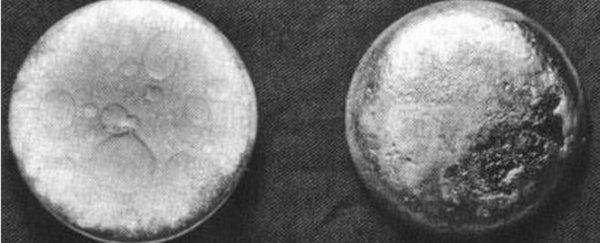Don't freak out, but a very small speck of weapons-grade plutonium has gone missing from Idaho State University.
The specimen in question is 1 gram (0.04 ounces) of plutonium-239 - roughly the weight of a paperclip.
Plutonium was at the core of the Fat Man bomb that was dropped over Nagasaki in 1945, and it doesn't occur naturally.
It can only be made in nuclear reactors, which is why each sample is very carefully documented and controlled to make sure it doesn't get in the wrong hands.
Except in this case.
According to the Nuclear Regulatory Commission (NRC), the plutonium sample - officially known as AP-237 - was last recorded by the university in 2004 and could have been lost anytime between now and then. It wasn't until October 2017 that anyone formally realised it was missing.
Small samples of plutonium are used by the university's researchers to measure radiation exposure.
Apparently staff at the university noticed a loss of integrity in this sample back in 2004, and as a result sealed it up in clearly marked protective covers, and then put it aside to be disposed of.
After that, it was deleted from the official database of nuclear materials - but no one ever recorded where it ended up.
"Unfortunately, because there was a lack of sufficient historical records to demonstrate the disposal pathway employed in 2003, the source in question had to be listed as missing," Cornelis Van der Schyf, vice president of research at Idaho State, told the Associated Press.
Although it's easy to jump to worrying conclusions, the NRC isn't overly concerned.
"We suspect that it ended up in a landfill for radioactive materials," Dricks told Rafi Letzter over at Live Science.
While he couldn't confirm there was no risk to the public, it seems like this is more a case of bad record keeping, rather than a James Bond-type scenario.
The NRC is now asking Idaho State University to pay an US$8,500 fine. The university also has 13 other gram-sized samples of plutnonium, and these will need to be turned over while their protocols are reviewed by the NRC.
The good news is that even if this sample did end up in the wrong hands, it's not enough to make a full nuclear bomb, according to the Associated Press (although it could still create a dirty bomb, they note).
The plutonium core inside Fat Man was around the size of a soft ball and weighed 6.2 kg (13.6 pounds). So roughly 616,900 times more massive than the piece that's currently unaccounted for.
Still, it's never great to hear that the people we trust to manage this potentially deadly substance are subject to the same human error and oversights as the rest of us. Let's hope this incident is a good excuse to tighten up protocols.
